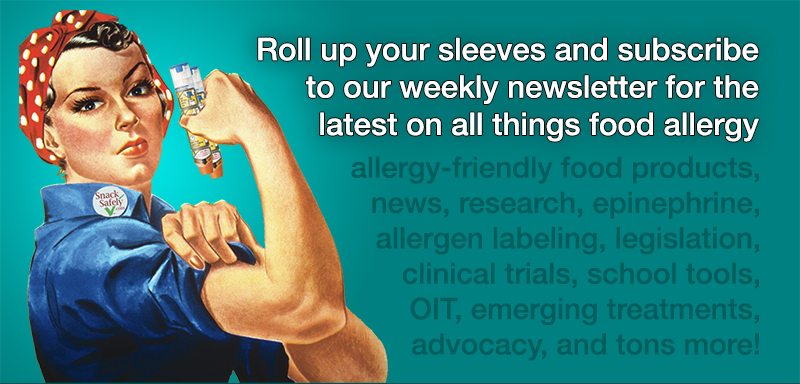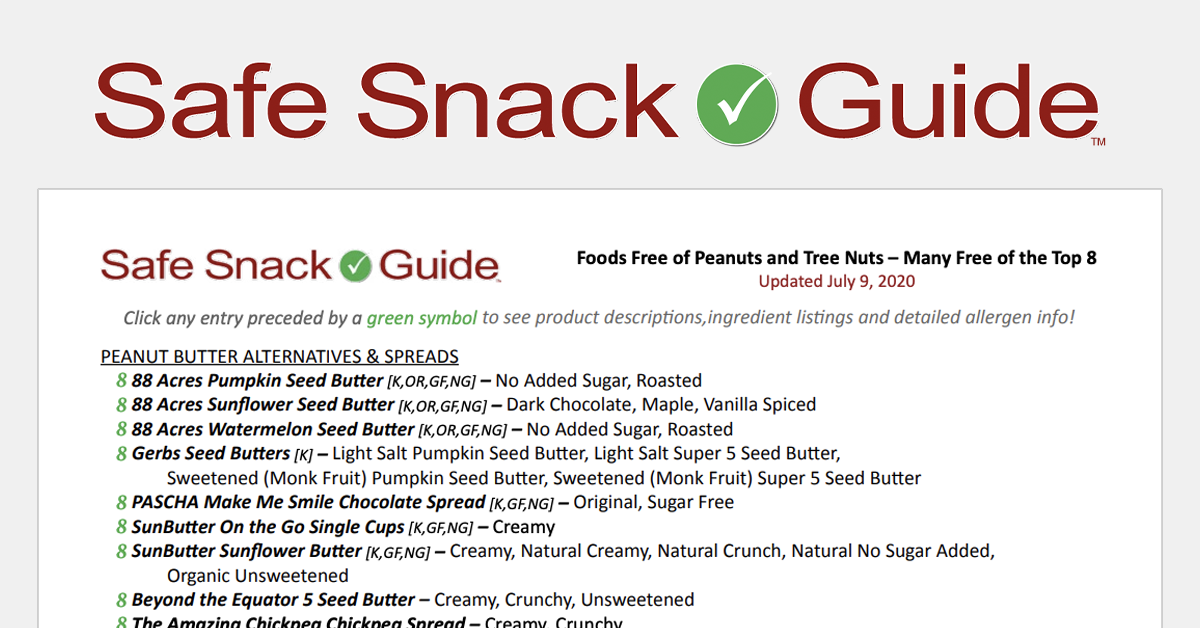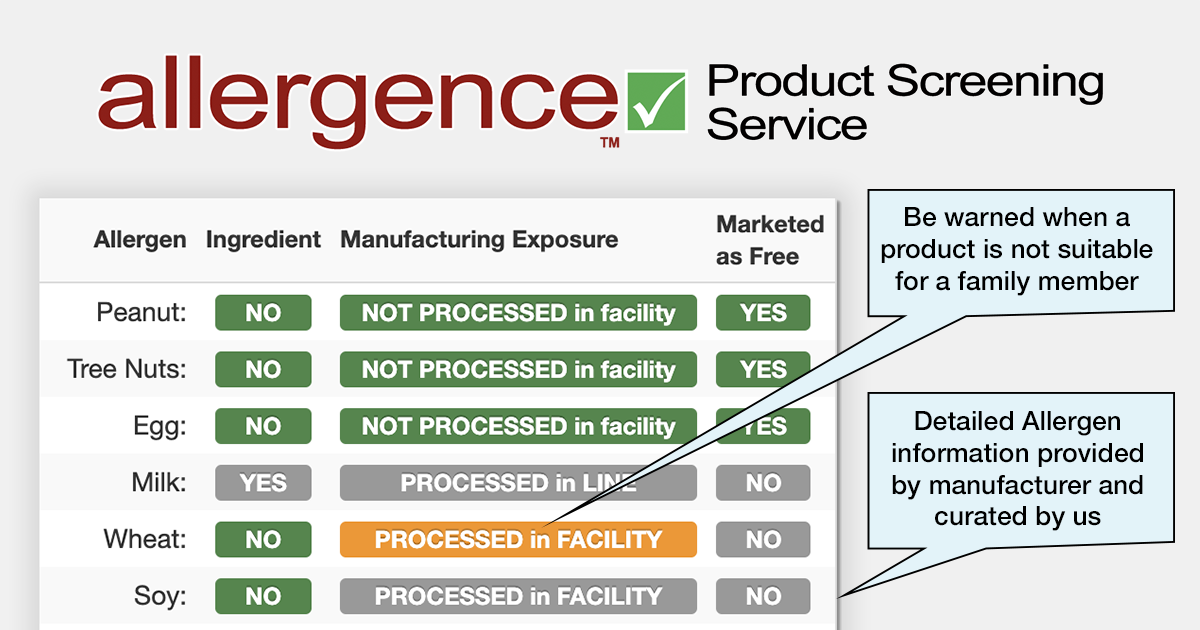The petition entitled: “Urgent Call to FDA: Reform Dangerous Food Allergy Labeling Ambiguity NOW!” circulating on Change.org surpassed 5,000 signatures this weekend.
In the wake of avoidable tragedies, such as that which befell 25-year-old Órla Baxendale, who succumbed to anaphylaxis in 2024 after consuming a cookie that contained undisclosed peanuts, ambiguous and ineffective US allergen labeling practices must be addressed. We can’t allow others to die.
The petition calls for four straightforward changes to the FDA’s allergen labeling regulations that would significantly enhance safety for the food allergy community. (See below for the petition’s text in its entirety.)
We encourage you to sign the petition and take a moment to share it with family, friends, coworkers, and social media connections, encouraging them to do the same.
We pledge that each time the petition accumulates 10,000 signatures, we will print it and send it, along with the collected signatures, to the FDA and select members of Congress.
Please be an agent for much needed, life-saving change by signing and sharing the petition.
Petition Text:
Urgent Call to FDA: Reform Dangerous Food Allergy Labeling Ambiguity NOW!
To the Commissioner of the US Food and Drug Administration:
We, the undersigned members of the food allergy community, representing millions of individuals, families, and advocates, urgently call for immediate action to address critical deficiencies in current US food allergen labeling regulations. Since the Food Allergy Labeling and Consumer Protection Act (FALCPA) took effect in 2006, our community has consistently struggled with vague, ambiguous, and insufficient allergen disclosures. This ongoing lack of clarity leads to inadvertent exposures, severe allergic reactions, and preventable medical emergencies, placing an unacceptable burden on consumers trying to manage life-threatening conditions.
To safeguard public health and uphold the fundamental right of consumers to accurate information, we demand the following essential and achievable changes be implemented into current allergen labeling regulations:
1) Mandate the “Contains” statement
Today, “Top 9” allergen disclosures may be made in either of two ways, injecting unnecessary ambiguity that confuses consumers to this day.
The first option for food manufacturers is to include the name of the food source in parenthesis following the common name of the major food allergen in the list of ingredients in instances when the name of the food source of the major allergen does not appear elsewhere in the ingredient statement.
For example:
Ingredients: Enriched flour (wheat flour, malted barley, niacin, reduced iron, thiamin mononitrate, riboflavin, folic acid), sugar, partially hydrogenated soybean oil, and/or cottonseed oil, high fructose corn syrup, whey (milk), eggs, vanilla, natural and artificial flavoring) salt, leavening (sodium acid pyrophosphate, monocalcium phosphate), lecithin (soy), mono-and diglycerides (emulsifier)
This fragmented disclosure forces the consumer to scan a difficult-to-read ingredient list to determine whether their Top 9 allergen of concern is an ingredient of the product.
The second option is to place the word “Contains” followed by the name of the food source from which the major food allergen is derived, immediately after or adjacent to the list of ingredients. For example:
Contains Wheat, Milk, Egg, and Soy
ACTION: Mandate the exclusive use of the “Contains” statement to eliminate this ambiguity and make it easier for consumers to determine whether a Top 9 allergen is an ingredient of the product.
2) Mandate a “Top Allergens Processed in Facility” statement
Precautionary allergen label warnings like “May contain traces of almonds” or “Manufactured in a facility that also processes wheat” are entirely voluntary; current regulations say nothing about when they should be used, how they should be worded, or where they should appear.
Some manufacturers include such warnings, many major manufacturers don’t, and others will warn for one allergen (say peanuts) and not for another (say soy). Their absence does not mean the product is safe from potential cross-contact with an allergen, despite widespread misconceptions.
Action: Mandate a single advisory appear on the label whenever a top allergen is processed in the same facility but is not an ingredient of the product. We prefer:
Top Allergens Processed in Facility: peanuts, soy.
3) Mandate the labeling of all ingredients, including spices, flavors, colors, and additives
The FDA allows many ingredients in a product to be disclosed under broad categories, including spices, natural flavors, and colors. Many of those ingredients may, in fact, be allergens to a segment of the allergic community.
Every consumer has the right to know exactly what ingredients are in a food product at the time of purchase, to protect themselves from inadvertent exposure to an allergen.
ACTION: Mandate ALL ingredients be individually disclosed under their commonly known names.
4) Extend the recognized Top 9 allergens based on updated, continually monitored criteria
Many in the community are allergic or intolerant to many foods beyond the Top 9. Other countries have much broader lists of top allergens that must be disclosed separately. For example, the European Union identifies 14 top allergens, including mustard, lupin, mollusks, and sulfur dioxide/sulfites not required under US labeling regulations.
ACTION: Establish and implement a dynamic, data-driven process for continually reviewing and updating the list of major food allergens requiring disclosure. This process must expand the current criteria beyond the initial 90% threshold to encompass a broader spectrum of clinically significant allergens, recognizing that the landscape of food allergies evolves. The updated list must be reviewed and revised on a mandatory, scheduled basis (e.g., every [e.g., three] years) to ensure it reflects current public health needs and international best practices.
In conclusion, the current inadequacies in U.S. food allergen labeling regulations represent a significant and preventable public health risk. They place an undue burden on individuals and families, forcing them to navigate a confusing and dangerous food environment. The essential actions outlined above are not merely improvements; they are critical, actionable steps that will profoundly enhance consumer safety, foster trust, and ultimately save lives within the food allergy community. We urge the Commissioner and the FDA to prioritize these vital reforms without delay.





